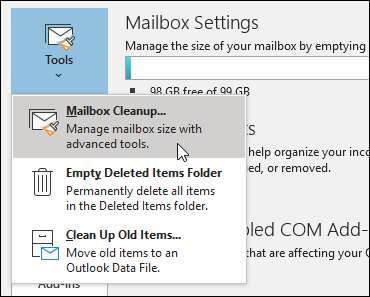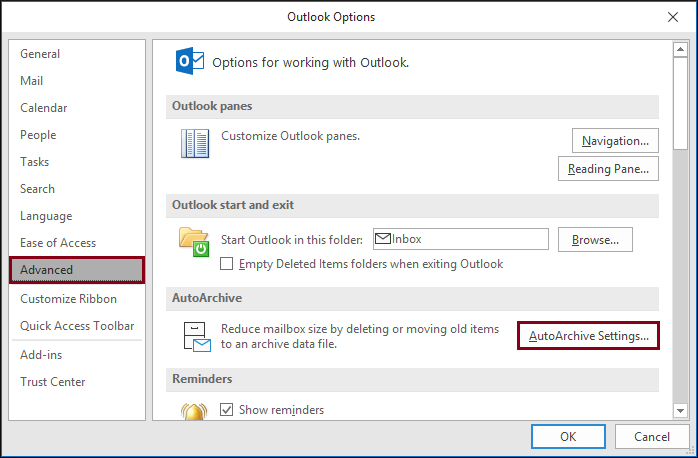
The email will no longer be on the server. This transfers the messages from the server to your computer. You boot up Outlook and log into your email server, and it downloads any messages you have waiting for you. When someone sends you an email, it is stored on a server, waiting for you to come pick it up. The way POP protocols work is like a holding cell or a post office box for your emails. pst files, while other kinds of clients using the IMAP protocol use. Outlook has two different kinds of data file, depending on the format you’re using for email.
#BEST PRACTICE FOR ARCHIVING EMAILS IN OUTLOOK 2016 ARCHIVE#
For this reason, you need to make sure that your archive cutoff is a sufficiently timed date that you’re rarely going to need to access those messages. Any message in your archive is a message that will not be accessible from your Outlook client without manually recovering it from the archive. With an Outlook archive, you’re basically sealing away all of those emails in a remote location. You can still search through and access all of those emails. You can file messages away into specific folders if you create them, of course, but by default archival is just hiding it away. In Gmail, when you archive an email, it’s basically just being put in a huge “archive” folder that isn’t your inbox. The length of retention varies from place to place, but it’s a very real issue when Outlook can bloat up and your overly large PST files can hog server space. Law offices and many businesses have data retention policies that require users to keep years worth of messages available in case they are needed for investigations for one reason or another. This guy on Reddit is one of many people every year who ends up in trouble for deleting messages they shouldn’t have, even if those messages aren’t important. Plus, sometimes you’re in a situation where you can’t delete messages. Deleting old messages can speed up Outlook, but it’s not the sole solution. Nobody needs correspondence about the 2014 holiday party or a bunch of get well soon messages when your buddy Craig was out of the office with the flu.



If you’re in a situation where you can just delete old emails, that’s fine. The more emails you receive – and don’t delete – the slower Outlook will get. Your email client slows down as it has to process larger and larger data stores. Maybe your suffering is enhanced because you hate your job, but that’s not the sole cause of this effect. After years of dealing with hundreds of emails every day, many with attachments, you’ve probably noticed that your Outlook client is getting slower and slower. Individual emails are generally small, but emails with attachments can grow quite large. Regardless of how you store and manage emails, the fact is, emails are data. It can work in both POP and IMAP formats, and there are different ways it handles emails for both of them. Outlook is an email client that typically interfaces with an email account on a server.


 0 kommentar(er)
0 kommentar(er)
